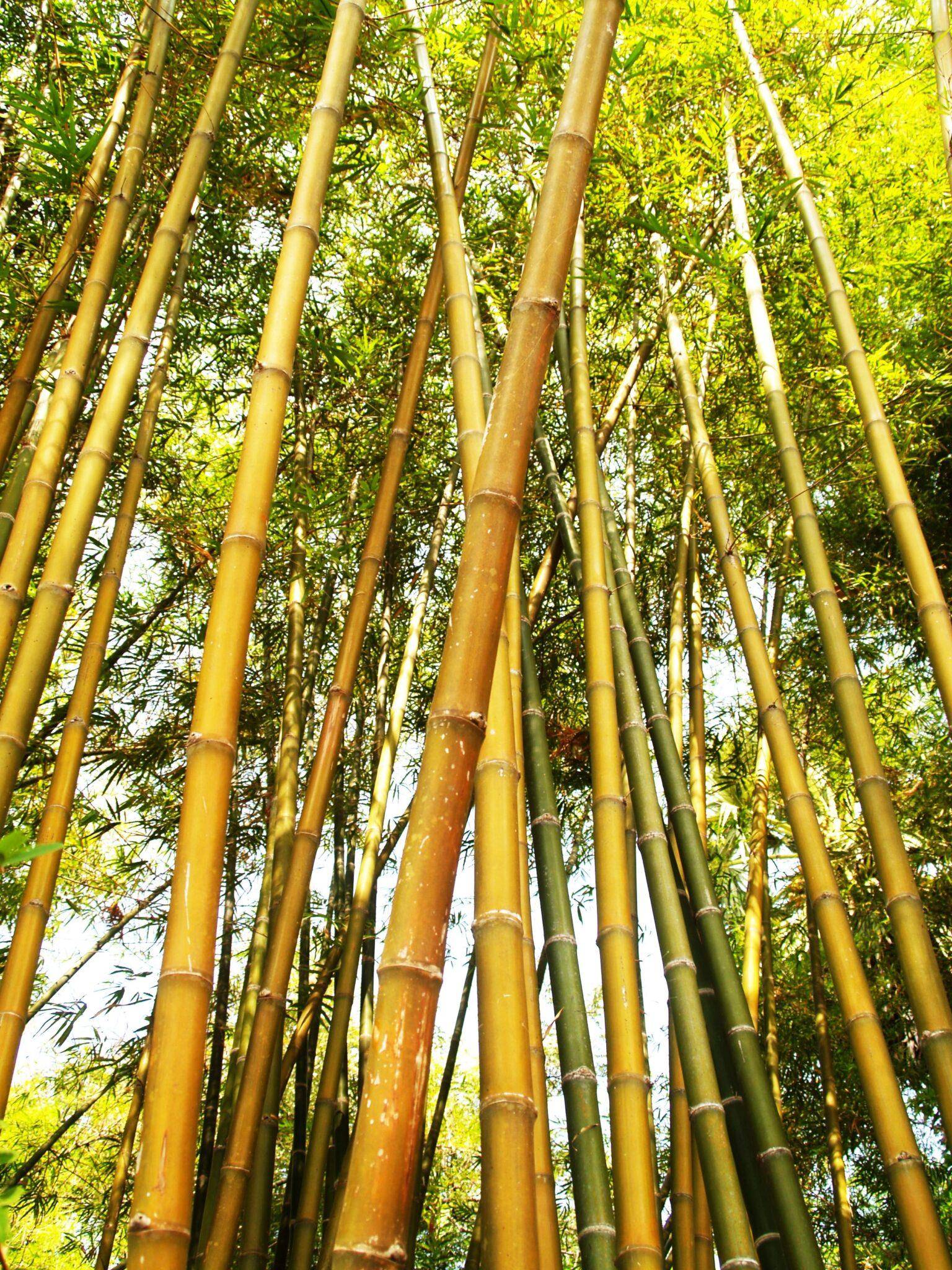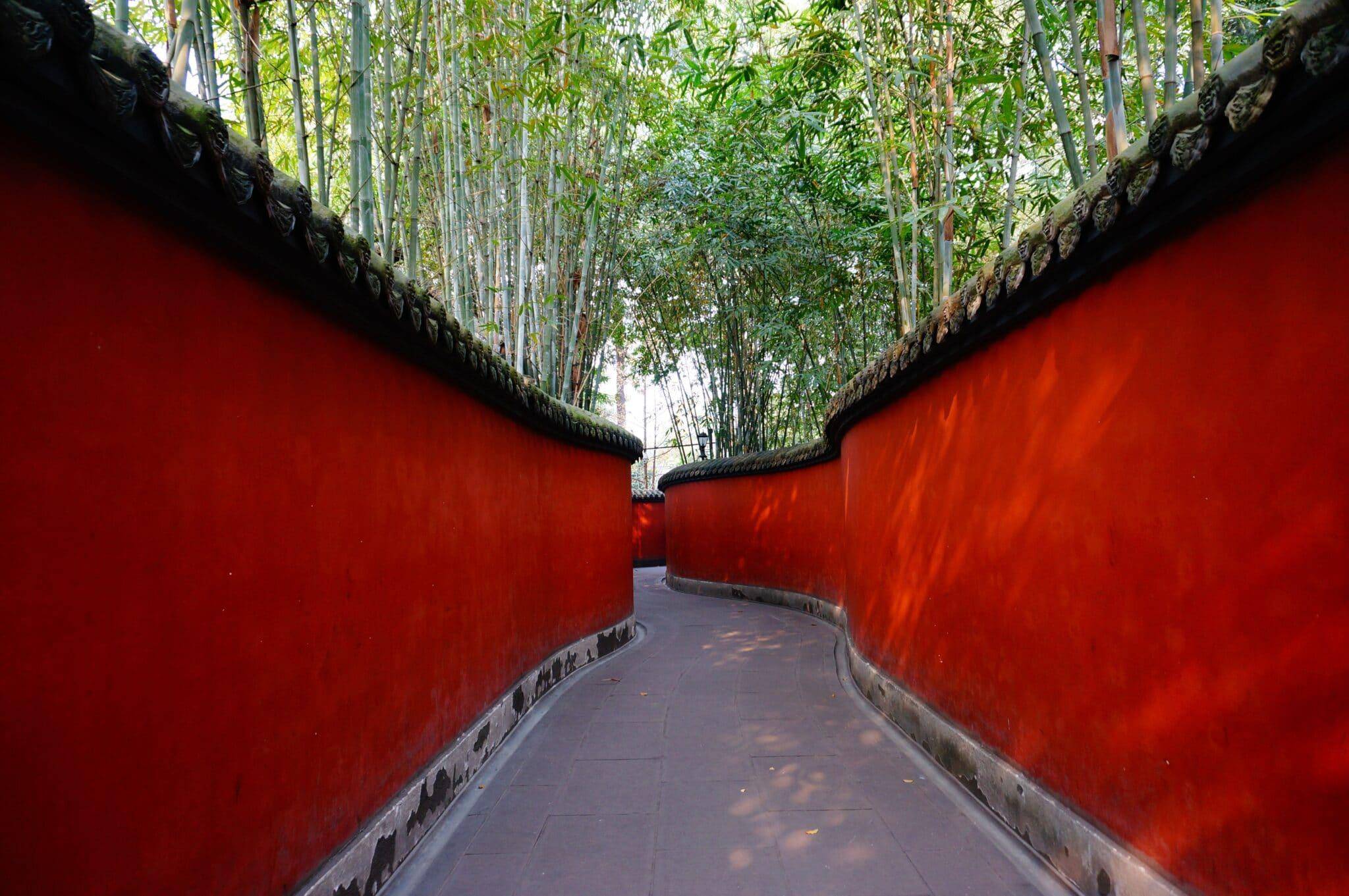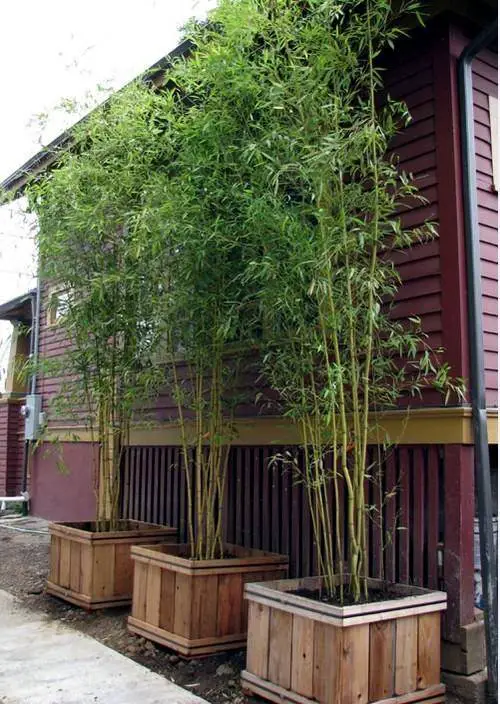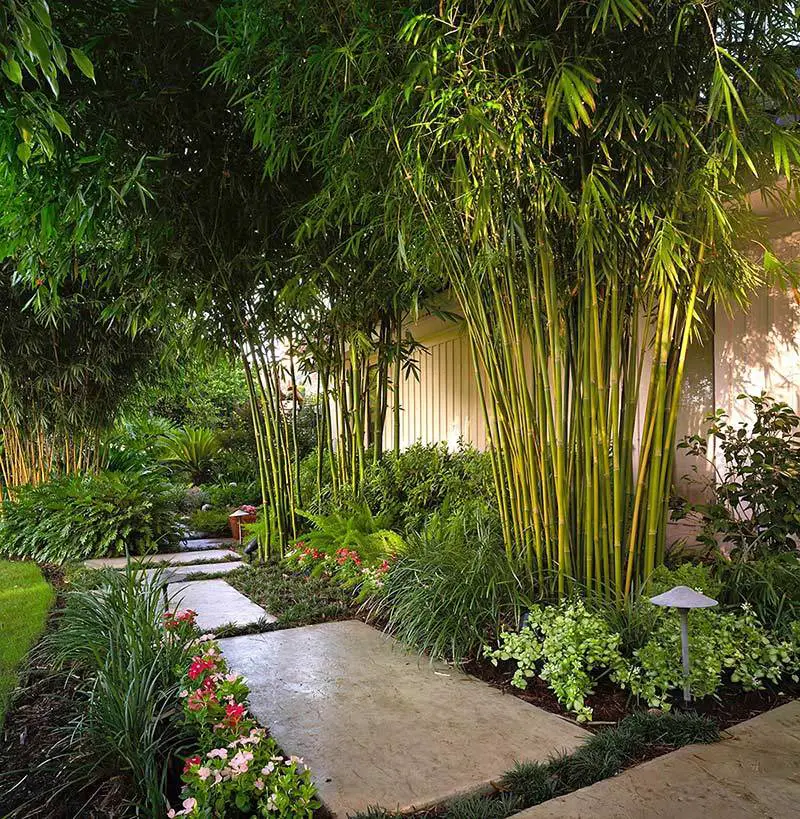Table of Contents
Learn How To Grow Bamboo And Modernize Your Gardens
Bamboo is an amazing choice for screening and plating specimens, you should learn how to grow bamboo in your garden and make it look more than astonishing. The best thing about growing bamboo is that it just fits with all types of gardens and everything appears simply alluring and aesthetic giving you those modern vibes. Also, there are many varieties of bamboo that can be grown easily as per your requirements depending upon the type of size.
It gives an Asian vibe to your garden which we all love. Let’s see how to grow bamboo and some important care tips to keep in mind for extraordinary growth.
Let’s see different designs of bamboo before seeing how to grow bamboo so you can finalize which type of bamboo plant you want in your beautiful garden.
Types Of Bamboo

You can bifurcate bamboo into two main types, these are running bamboos and clumping bamboos. You might have been warned about a type of bamboo that literally takes over your entire garden. That is basically running bamboo. It just turns into a jungle but you can also use some tricks to grow this plant in the way you want it to be.
The other type of bamboo that is clumping bamboo is quite organized and spreads underground, but its growth is slower than the previous one and can be controlled easily. This is a great choice if you want to grow bamboo casually or you have very limited space for the bamboo to fit inside your garden.
It depends on you which type of bamboo you want to grow. Let’s see how to grow bamboo now. A quick way to identify the bamboo type by just looking at it is seeing its roots. Fir running bamboo, these roots are long ad horizontal while for clumping bamboos, the roots are small and round.
Another not so common variety, that is the Reed variety of bamboo has long and sagging leaves. Also, in the summer season, the reed has ears. Let’s see how to grow bamboo.
How To Grow Bamboo

These are meant for growing in warmer climates and you can easily take care of these plants without investing a lot of time. You just have to keep a few things in mind which we generally do regarding all our household plants.
If you live in too intense climates like too cold or too hot, bamboo can become a little bit tricky to be grown. But, it is relatively inexpensive and adds a beautiful touch to the yard. Here is what you need to do if you wish to learn how to grow bamboo.
Growing bamboo requires 3 major steps, these are preparation, planting, and taking care of grown bamboo.
Preparation Of Bamboo
For preparing the bamboo you need to know the differences between the 3 major types of bamboo available. You have already seen running bamboo and clumping bamboo in types of bamboo. Another less common variety of bamboo is the reed.
- Reeds are very rarely planted in gardens or yards.
- Running bamboo is known to send rhizomes that spread into different areas which cause this bamboo to become invasive.
- Clumping bamboo usually grows in clusters that are tight and it rarely spreads over other larger areas which is the reason it is preferred.
You need to pick the best variety of bamboo as per the climatic condition of the region you reside in. Most varieties of bamboo do great when grown in tropical climates. If you live in a cooler area, you can choose from a few of the hardier varieties as they can grow successfully in such areas.
If you are living in warmer hardiness zones such as the zones that range between 7 to 10, some good choices of bamboo varieties to bring home include Alphonse Karr, Phyllostachys Nigra, and Borinda Boliana. Phyllostachys is a type of running bamboo and the other two are varietals of running bamboo. This is the first step on how to grow bamboo, you need to know the varieties you want to have in your yard.
For temperatures slightly cooler that falls in hardiness zones ranging between 5 to 6, you may try clumping bamboo named Rufa or running variety names Pleioblastus Viridistriatus.
Once you have chosen the variety and you have it ready to be planted, you need to choose the spot or area in your yard where it needs to be planted. Bamboo requires a great deal of sunlight so it is important that you pick a spot in the yard that receives at least 8 hours of sunlight a day or even more. But, some tropical species of bamboo also require partial shade when the sun remains on top as it is extremely hot during that time of the day.
Shades can be important especially when it is winter. Having a combination of direct sunlight and frost usually dehydrates the bamboo plant quickly. If you are living in regions receding frost during winters, you should choose a spot that receives partial shade instead of facing sunlight the whole day.
Ready with the spot? It is time to amend the soil for growing your bamboo variety. Bamboo does not require a specific type of soil to be grown mostly and it does quite well with soil types. If you still wish to find the perfect soil, you can choose marly soil or loam soil. Also, you should try to improve your odds of success by mixing and digging the soil to make amendments before planting your bamboo.
To amend the soil nicely, you can use manure or garden compost into the soil as it helps to provide additional nutrients. The ideal way to work compost is to work it inside the bottom of the transplant hole so that the roots of bamboo can sit on the top of it.
Try to avoid soggy or rocky soil as much as possible. Loam soil is a great mixture of 5 different parts of topsoil composted using 2 different parts of sand, 2 parts of silt, and the remaining one part of clay. Also, try to avoid using soil that is impermeable relatively.
Soil and spot for growth are definitely important, but preparing for wind is another factor you should be concerned about while planning to grow bamboo.
Preparing for wind should be taken seriously. You know that bamboo has a shallow type of root system. Due to this shallow system, it grows relatively faster than other plants and as a result, the chances of being damaged by the wind current are also high. You require a barrier to prevent your bamboo from being damaged. The easiest way to do so is to position the plants behind the hedges or trees in your yard. If you do not have huge trees, you can also build a fence around the region you want to grow them.
Prevent the bamboo from spreading. If you are planning to plant a running type of bamboo you also need to construct a barrier for preventing it from spreading and invading the growth of other plants in your yard.
After you have determined the region where you want to plant the bamboo, just install some barriers of metal sheet or concrete around the perimeter of the bamboo. The barriers should be 4 feet deep. You do not require these barriers in case of clumping bamboos.
Planting The Bamboo

Done with all the preparations? It is time to plant your bamboo. How to grow bamboo or how to plant it in your yard is the main step that needs to be done properly. We know that bamboo grows really quickly and it needs frost-free and warm temperatures for its proper growth. For best results on how to grow bamboo, you need to sow the seeds when the final frost of the season is over.
If you are planting your bamboo tree from seeds, you must start in the early spring so that your plant has enough time for establishing itself till the summer season arrives. If you want to transplant any established seeds, you can plant them in any part of spring.
Try to avoid growing the plant in the fall, this is especially suggested for people that live in cooler temperatures comparatively because the plant needs a lot of time to harden before the cold season arrives and the drying winds of this season begin.
In addition to this information, for people living in hot climates having the temperature reach 38 degrees Celcius, you should plant the bamboo plant early enough as the spring starts or early fall to avoid the harsh and intense heat of the summer season.
If you have gathered the seeds, you must prepare them before sowing if you wish to learn how to grow bamboo in the most amazing way. Bamboo seeds need to be dried and then cleaned in the sun for at least 1 to 2 hours. Once they are cleaned and dried, you have to soak them in clean water to break the dormancy state they are present in. Soak the seeds for 6 hours to 12 hours for this.
Drain the water after soaking them for 10 to 20 minutes. Wait for some more time and then they are ready to be sown.
For planting the seeds, you need to have plastic containers. If you are growing the bamboo from the seeds themselves, you are likely to get amazing results if you use soil-filled plastic pallets for seedling growth. Let’s see how to grow bamboo and how to plant the seeds inside.
- Fill the containers of seedling with a mixture created from 1 part of fine wood, 1 part of ashes, and 8 parts of topsoil. You can also replace wood with rice husks. You need to filter this mixture through a wire mesh for removing any debris or stones before filling that container.
- You need to leave the soil fairly loose while you are filling the containers.
- Now, make small holes of size between 1 to 2 inches deep in the mid or center of all the seedling compartments. You have to drop a single seed in each of the holes you have made and cover them using additional soil gently.
- Keep moistening the soil immediately and this soil also needs to be watered daily. Place it in an area having partial shade for letting it grow nicely.
Once you are done with preparing your seeds and planting them in seedling containers. you have to transplant these seedlings after waiting for 3 to 4 months. Although adult bamboos take lesser time growing, in the early stages when the plants germinate out of the seeds, most species of bamboo are not usually strong enough to be transplanted before 3 to 4 months.
These seedlings should be transplanted into small and separate pots or inside poly bags containing mixtures of one part sand, three parts soil, and two parts manure. Here are some important things that you need to keep in mind:
- The seeds of bamboo usually germinate after waiting for 10 to 25 days. In the initial days, the leaves of bamboo are quite fragile.
- it will take 3 to 4 months for the seedlings to generate or produce a rhizome, or a stem that becomes capable of generating new sprouts. This is the point in time when you can transplant the bamboo easily ad quickly.
- Keep in mind that if you are translating the seedlings of the bamboo plant instead of growing the bamboo from its seeds, you need to pay careful attention to the instruction given above.
Once you know how to grow bamboo you might be wondering how far should each seedling of bamboo be planted in your yard for its amazing growth and appearance. Space each bamboo 3 to 5 feet apart from each other while translating them in your yard. If the goal is to create a dense bamboo screen, this needs to be done in the case of running bamboo varieties.
Keep these important things and points in your mind.
- Bamboo should be transplanted inside the yard once they become 5 to 20 inches tall. You should remove them from the pots they are placed in or from the poly bags and place them inside the ground directly.
- The hole inside which you transplant the bamboo should be roughly twice in size and twice as wide as the root mass of bamboo.
- If you are working with clumping varieties of bamboo, you can just place them at a distance of 1 to 2 feet only because these varieties do not spread as much as other varieties.
- Note that the coming varieties of bamboo gain 1 to 2 feet of height every year, while the running varieties of bamboo gain a height of 3 to 5 feet every year. Their spreading rate is the same although.
This is all you need to do to learn how to grow bamboo plants. Once you have successfully grown the bamboo plant, you cannot expect it to grow nicely without following the care tips. Below mentioned are some important tips you need to keep in your mind to have extraordinary growth and look for your yard.
Long-Term Care Tips For Bamboo

Watering The Plant
Most of the species of bamboo plants need to be watered regularly. But that does not mean you are pouring too much water or letting the roots sit inside water for extended time periods. Excess water may spoil the roots, so make sure you are letting the water dry out before adding water the next time.
When the weather is dry and mild, you should water young shoots and bamboo seeds daily. Once they establish their grounds in your yard, you can reduce the number of watering days to 2 times per week during mild weather and 3 to 4 times per week if the weather is windy or too hot.
Spreading The Mulch
Organic mulches are great and they help to keep the growth of bamboo in check and also helps in protecting the plant from potential threats imposed on it.
One of the best mulches is grass clippings since they are highly rich in silica and nitrogen. Hay and compost may also work fine and so do other types of untreated or organic mulch.
Protecting The Bamboo Plant
Learning how to grow bamboo is one thing and protecting it from threats is another for lifelong. As you already know by now that bamboo is a warm-weather plant. So these plants require extra precautions during the winter season to prevent their roots from freezing completely.
You may apply an extra layer thick enough to protect the root of mulch when the weather outside is freezing. If you feel that harsh and cold wind is causing too much problem you might also need to create a barrier temporarily in this season to provide a shield to the plant.
If the bamboo plant takes on a silver color or dry look, these could be symptoms or signs of having cold injuries that need to checked and treated.
Fertilizers
You need to bring home fertilizers having nitrogen content for your bamboo plants. Usually, organic fertilizers are recommended to be used as they are rich in nitrogen. Nitrogen is good and promotes the greener and stronger growth of the plant. This schedule will lead to the amazing growth of the bamboo plant in the main seasons.
You have to apply the fertilizers once in every spring season and once in every summer season. Also, if you have grown a mild or organic type of bamboo, you can apply the fertilizer once every month throughout the summer, early fall, and spring seasons.
Pruning Required
Thin and prune the bamboo plant as you require. Many people lobe growing lucky bamboo in their house indoors, it is a small version of bamboo that can be grown indoors easily. As bamboo plants have the tendency to spread especially the running bamboo, you need to thin it out so as to prevent the stalks from crowding at one place and cutting the supply of nutrients of other plants.
If you have a variety of running bamboo in your house that needs to be stopped from spreading you can create a barrier. If you do not wish to invest in barriers, you can simply cut new shoots off the level of ground as soon as they gather in areas you do not want them to spread.
Remove unattractive and old bamboo branches every year and trim them back until they appear net and tidy. Remember to cut the bamboo just above the node, as it will grow back.
Protection Against diseases

bamboo is generally resistant to most of the diseases and pests that could affect the plants, so you do not have to apply fungicides or pesticides every other month. You can apply these things once you notice a pest developing on the plant.
Some bamboo species do fall victim to red spider mites, scale insects, and rust. Mites are usually seen in small bamboos when the shoots are new, however, they do not develop in adult bamboos as they are quite hardy.
If you have suspected any fungi or pests on the bamboo causing threat, you can spray them using pesticides to get rid of them.
Harvesting The Bamboo
Did you know that fresh new shoots of bamboo are edible and can be used for food? You can easily add the leaves to your diet by harvesting the young shoots for the first few months. Isn’t that amazing?
For eating purposes, bamboo is best when it is fresh but you can also store the food by freezing it for long-term usage. Fresh bamboo has a sweet flavor and crisp texture, probably the best combo we love to eat. It is an amazing source of fiber and in terms of nutrient benefits, it is quite similar to onions.
This was all you needed to know about how to grow bamboo and some important care tips to nurture it for life-long.
Interested in growing microgreens at home, check this amazing guide that will surely clear all your doubts in one go.


[…] you are interested in growing bamboo in your house, learn through these tips and guide how to grow bamboo and enhance the look of your outdoor gardens […]